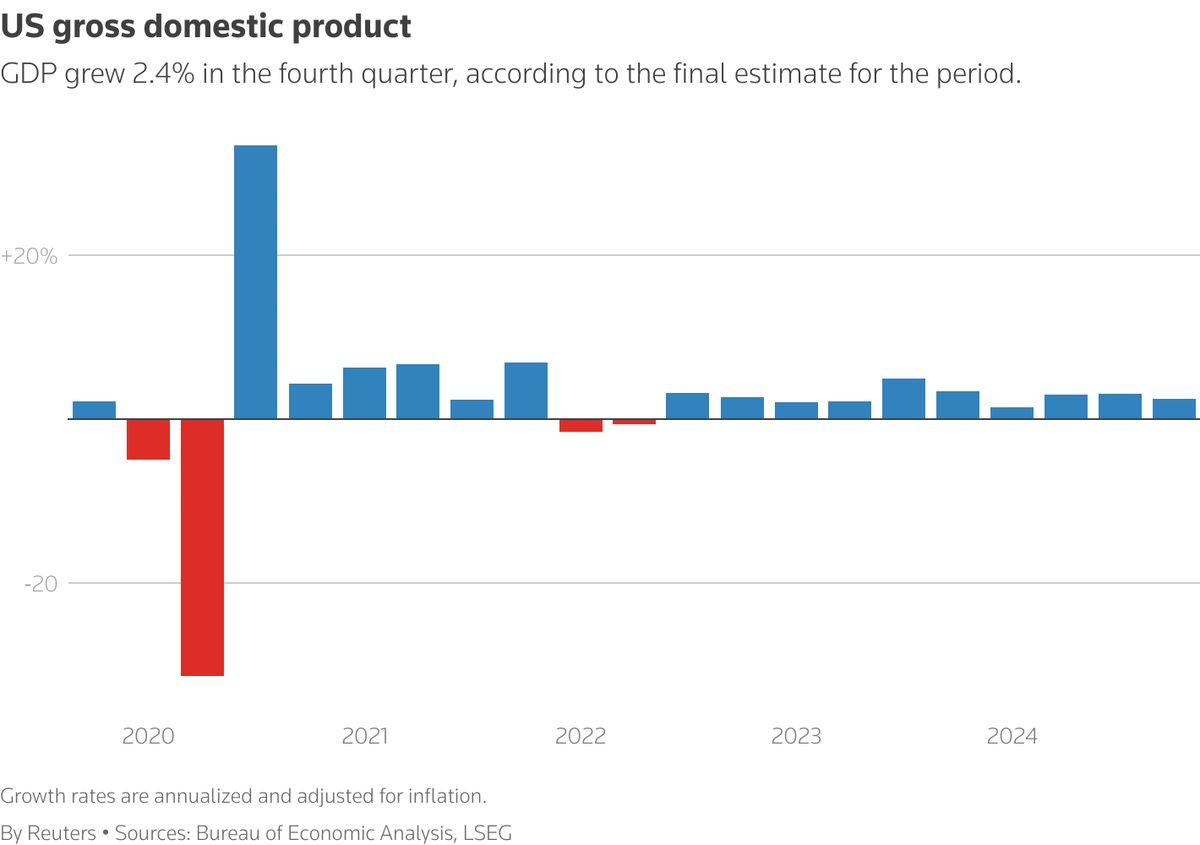
Traders work on the floor of the New York Stock Exchange in New York. At 9.47am ET, the Dow Jones Industrial Average fell 271.87 points, or 0.64%, to 42,182.92, the S&P 500 lost 34.29 points, or 0.59%, to 5,677.91 and the Nasdaq Composite lost 119.69 points, or 0.67%, to 17,779.32.
(March 27): Wall Street's main indices slipped on Thursday, as President Donald Trump's latest tariff gambit sent auto stocks into a tailspin, while investors sifted through a slew of economic indicators.
In a late-night announcement on Wednesday, Trump unveiled his plan to implement 25% tariffs on imported cars and light trucks effective next week, while those on auto parts are expected to begin from May 3.
Automakers, with sprawling supply chains crisscrossing North America, took a hit. General Motors fell 8.2% and Ford lost 2.7%. Car-parts manufacturers like Aptiv and BorgWarner Beach shed about 6% each.
Tesla was up about 0.8% after a 5.6% drop in the previous session.
Shares of Japanese, European and South Korean automakers, who heavily depend on the US as a key export market, also suffered setbacks.
"We believe that he's using [auto tariffs] as a trade negotiation. The markets are jittery because nobody really knows what's going to happen and what will come out in future," Nicolas Lin, chairman and interim CEO of Aether Holdings.
Trump's mercurial trade policies have injected a dose of uncertainty into the markets, as investors fret over potential disruptions to supply chains, hampered investment, and the spectre of inflationary pressures threatening global economic growth.
Trump has also pledged to impose reciprocal tariffs on trade partners in early April, though he has intimated that these policies might be subject to flexibility.
Investors fled to safe-haven assets, driving gold to record levels, with bullion miners such a Newmont and Barrick Gold up about 0.5% each.
At 9.47am ET, the Dow Jones Industrial Average fell 271.87 points, or 0.64%, to 42,182.92, the S&P 500 lost 34.29 points, or 0.59%, to 5,677.91 and the Nasdaq Composite lost 119.69 points, or 0.67%, to 17,779.32.
Ten of the 11 S&P 500 sectors were in the red, with technology leading with a 1.3% drop. Consumer staples, often seen as a sector that is able to fare better in an uncertain economic environment, inched up 0.4%.
A final estimate showed gross domestic product (GDP) increased by a more than expected 2.4%, while weekly jobless claims were broadly in line with estimates.
The highlight of the week's economic indicators is the personal consumption expenditures price index — the Federal Reserve's favoured inflation gauge — scheduled for release on Friday.
Investors have trimmed their exposure to US equities, dragging both the S&P 500 and the Nasdaq down by 10% from their record peaks earlier in the month, thus entering technical correction territory.
Both indices are on course to conclude the first quarter of 2025 in negative territory, with the benchmark index poised for its first quarterly decline in six quarters, while the tech-centric index braces for its largest quarterly drop in nearly two years.
Fed policymakers, including Susan Collins and Thomas Barkin, are anticipated to share their economic insights later today.
Among other stocks, Advanced Micro Devices lost 4.5% after Jefferies downgraded the chip stock to "hold" from "buy", sending the broader chip index down 2.3%.
Declining issues outnumbered advancers by a 2.11-to-1 ratio on the NYSE and by a 1.88-to-1 ratio on the Nasdaq.
The S&P 500 posted seven new 52-week highs and five new lows, while the Nasdaq Composite recorded 18 new highs and 91 new lows.
Uploaded by Felyx Teoh
- China's biggest state banks to raise US$71.6b to boost capital
- Japan to give crypto assets legal status as financial products, Nikkei says
- Four Chinese nationals detained for illegally entering Bangkok disaster zone to 'retrieve documents'
- Volvo Car brings back Samuelsson as CEO to steer turnaround
- Gold rises to record as trade-war concerns drive haven demand
- King, Queen perform Aidilfitri prayers at Federal Territory Mosque
- Asia braces for historic test of export model from Trump tariffs
- Temasek-backed 65 Equity makes European foray with Swiss pharma merger
- Trump won’t rule out seeking third term as US president, says there are ways
- Trump threatens Russian oil penalties in bid to persuade Putin to accept ceasefire

